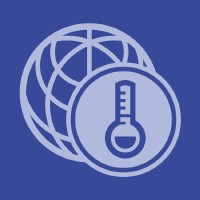Topic Editors


Advances in Hydro-Geological Research in Arid and Semi-Arid Areas
Topic Information
Dear Colleagues,
Recent advancements in hydro-geology allow for a better management of water resources and provide a strategy for overcoming issues in the future. In terms of concepts, models, and technology, the hydro-geologist community has created interdisciplinary approaches using tools of various sizes. Publishing studies highlighting developments and trends in the hydro-sciences is possible using remote sensing, GIS and artificial intelligence methods.
Studies utilizing supercomputer platforms, computer clusters, or other hardware are also of interest to this Topic since they can be excellent instruments for calibrating huge data gathered from field research or finely detailed laboratory trials.
The goal of this Topic is to offer a venue for the quick, open publication of peer-reviewed research on the hydro-geology and water resources of semiarid and arid regions. Topics to be covered in this topic include, but are not limited to, the following:
- Water management;
- Drought risk assessment;
- Groundwater optimal use;
- Water deficit;
- Advanced artificial intelligence;
- Remote sensing;
- Rainfall harvesting;
- Geographical information system;
- Spatial planning and governance for climate adaptation.
Dr. Ahmed Elbeltag
Prof. Dr. Quanhua Hou
Prof. Dr. Bin He
Topic Editors
Keywords
- drought assessment
- groundwater optimal use
- water deficit
- rainfall harvesting
- water management
- remote sensing
- geographical information system
- drought risk assessment
- spatial planning and governance for climate adaptation
Participating Journals
| Journal Name | Impact Factor | CiteScore | Launched Year | First Decision (median) | APC | |
|---|---|---|---|---|---|---|

Hydrology
|
3.2 | 4.1 | 2014 | 17.8 Days | CHF 1800 | Submit |

Water
|
3.4 | 5.5 | 2009 | 16.5 Days | CHF 2600 | Submit |

Climate
|
3.7 | 5.2 | 2013 | 19.7 Days | CHF 1800 | Submit |

Atmosphere
|
2.9 | 4.1 | 2010 | 17.7 Days | CHF 2400 | Submit |

Agriculture
|
3.6 | 3.6 | 2011 | 17.7 Days | CHF 2600 | Submit |

Geosciences
|
2.7 | 5.2 | 2011 | 23.6 Days | CHF 1800 | Submit |

MDPI Topics is cooperating with Preprints.org and has built a direct connection between MDPI journals and Preprints.org. Authors are encouraged to enjoy the benefits by posting a preprint at Preprints.org prior to publication:
- Immediately share your ideas ahead of publication and establish your research priority;
- Protect your idea from being stolen with this time-stamped preprint article;
- Enhance the exposure and impact of your research;
- Receive feedback from your peers in advance;
- Have it indexed in Web of Science (Preprint Citation Index), Google Scholar, Crossref, SHARE, PrePubMed, Scilit and Europe PMC.


